Basically I want a view which contains an Owner's details. The Owner can have multiple types of Vehicle's (or none), which can be selected with a Checkbox:

On submit, the database has to be updated, because next time the Owner is displayed in the View, the Owner must have the correct checkboxes checked.
I am unsure how to structure my EF Models, and not sure I am linking it correctly to get the result I want.
I do not want hard-code the Vehicle types as fields into the Owner object, because there are quiete a huge number of vehicles.
Can anyone point me in the right direction of how to link these models? Will I need two or three tables in the database?
This is what I have at the moment, but it is probably wrong. If you have an idea please stop reading now to avoid confusion. Any comments are welcome!
The Models :
public class Vehicle
{
public int VehicleID { get; set; }
public string Name { get; set; }
}
public class Owner
{
public int OwnerID { get; set; }
public string Name { get; set; }
public virtual ICollection<OwnerVehicle> OwnerVehicles { get; set; }
}
public class OwnerVehicle
{
public int OwnerVehicleID { get; set; }
public bool Ticked { get; set; }
//Not sure if this is needed, because ticked will always be true
//I delete OwnerVehicle if not needed
public int OwnerID { get; set; }
public virtual Owner Owner { get; set; }
public int VehicleID { get; set; }
public virtual Vehicle Vehicle { get; set; }
}
Controller :
public ActionResult Index()
{
//prepopulate Owner objects on the fly for this example, in my project it would fetched/created with EF into database
Owner owner = getOwner();
return View(owner); // we return the owner to view
}
public Owner getOwner()
{
//Create a owner
Owner owner = new Owner() { OwnerID = 1, Name = "JACK" };
//Create a list of vehicles
List<Vehicle> Vehicles = new List<Vehicle>();
Vehicles.Add(new Vehicle() { VehicleID = 1, Name = "I have a car"});
Vehicles.Add(new Vehicle() {VehicleID = 1, Name = "I have a bike" });
//the owner doesnt have any vehicles yet, therefor object OwnerVehicle is null at the moment
return owner;
}
[HttpPost]
public ActionResult Index(Owner owner)
{
//at this point, the owner needs have his list of Vehicles linked, and written to database
//
//ToDO
//return View();
}
The View below wont compile, because I am lost.
Index.cshtml
@model Owner
@using (Html.BeginForm())
{
<div class="editor-field">
@Html.EditorFor(model => model.OwnerVehicles)
</div>
}
EditorTemplates/OwnerVehicles.cshtml
@model OwnerVehicle
<div>
@Html.CheckBoxFor(x => x.Ticked)
@Html.LabelFor(x => x.TODO, Model.TODO)
@Html.HiddenFor(x => x.TODO)
</div>